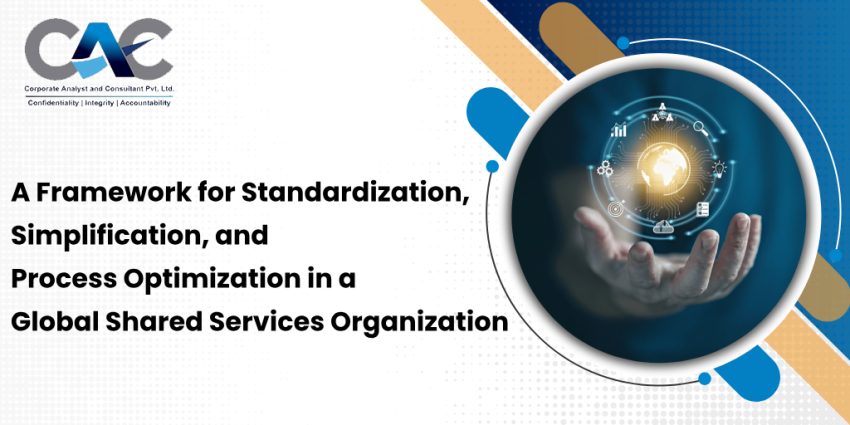The current business environment is quite competitive and firms are always trying to seek means to enhance efficiency, reduce costs and offer improved services. A good option has been establishment of a global shared services organization. These organizations are characterized by the different support functions including finance, human resource, procurement and IT becoming united in a centralized hub which serves regions and departments. Nevertheless, it is not enough to blend services. To make such a model actually successful, clear framework of standardization, simplification, and optimization of processes should exist.
Understanding the Need for a Unified Framework
A global shared services organization is one that works in several countries, departments as well as systems. This variety may cause an unf consistent process, duplication of efforts and inefficiencies. This might be employees doing the same thing differently, or it might be that they are using disjointed platforms that are not compatible with each other. Not only does this add to the operational costs it also causes confusion and delays.
To address these issues, the companies need to develop a framework, which works on the principles of three fundamental aspects, including standardization, simplification, and optimization of processes. This organization structure makes sure that the organization operates in a clear, consistent and a continuously improving manner in all its functions.
Standardization: Creating a Common Approach
Standardization, in this case, implies the establishment of a single mode of carrying out tasks throughout the global shared services organization. This does not imply negligence of regional needs or legalities but creation of a foundation process that can be supplemented a bit to fit local variations.
As an example, the invoice processing in various countries might have varying steps depending on tax regulations, yet the system and the workflow itself can be standardized. This can assist in minimizing training time, raising the understandability of the processes, and facilitating automation. When all people are using a similar method, then it is much easier to control the performance, monitor progress, and introduce changes in a short period of time.
Simplification: Reducing Complexity
After standardization, the next step is simplification. Many business processes evolve over time and become overly complicated. Too many steps, approvals, and unclear roles can make work slower and frustrating.
In a global shared services organization, simplification can involve reducing the number of systems used, cutting down on paperwork, or minimizing unnecessary approvals. The goal is to make processes easy to understand and execute. This also reduces the chances of errors and makes onboarding new employees smoother.
Simplification is not just about removing steps—it’s about removing steps that don’t add value. Engaging team members in this effort can help identify pain points and highlight what is truly necessary.
Process Optimization: Continuous Improvement
Once processes are standardized and simplified, the focus should shift to optimization. This involves regularly reviewing how work is done and looking for ways to do it better. A global shared services organization should establish regular audits, feedback mechanisms, and performance reviews to find areas for improvement.
Technology plays a big role here. Automation tools, data analytics, and workflow software can highlight bottlenecks, track delays, and even recommend faster methods. But optimization is not only about using tools. It’s also about encouraging a mindset of improvement. Teams must be open to change and willing to experiment with new ideas.
The Role of Leadership and Communication
For this framework to work, leadership must be committed. Leaders in a global shared services organization need to clearly communicate the value of standardization, simplification, and optimization. They must also involve employees at every level in planning and decision-making.
Communication between regions is equally important. Regular meetings, shared dashboards, and open channels of discussion help maintain consistency and promote collaboration.
Conclusion
A successful global shared services organization does more than centralize support functions—it builds a solid foundation based on clear, consistent, and efficient processes. By focusing on standardization, simplification, and process optimization, companies can deliver faster, more reliable services across borders. This framework not only improves productivity but also helps organizations stay flexible and ready for future challenges.
CAC serves as an expert guide in establishing and managing a global shared services organization. With deep expertise in finance, accounting, and operational frameworks, CAC supports businesses in streamlining functions, reducing inefficiencies, and ensuring standardized practices across departments and geographies for long-term organizational success.
















